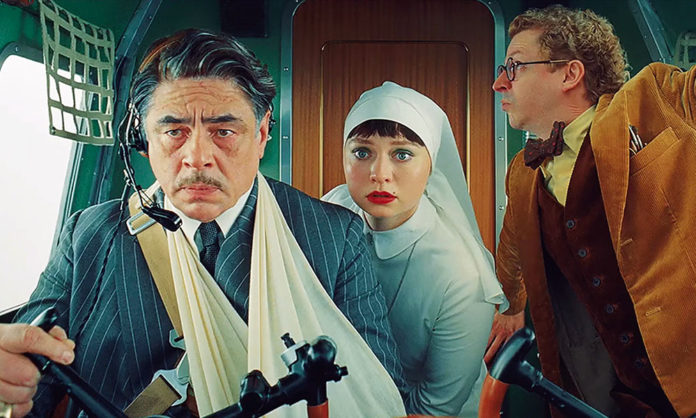
By Jared Rasic
The combination of quirk, whimsy, intricate sets, obsessive symmetry, bright color palette and hyper-specific aesthetic in Wes Anderson movies isn’t for everyone, nor should it be. But where I do take issue is with people who say that all of his movies are the same. They’re not. Not even close.
A few years ago I rewatched his filmography to spotlight the differences in his work. Here’s a brief look at his range:
Bottle Rocket (1996), his first, is the outlier because it doesn’t carry most of Anderson’s idiosyncrasies. It effortlessly combines a West Texas crime comedy with the iconoclastic existentialism of the French New Wave.
Rushmore (1998) To be young, brilliant and deeply misunderstood by all around oneself is one of Anderson’s favorite themes, but Max Fischer (Jason Schwartzman) isn’t just a representation of Anderson’s loneliness, he’s a synecdoche for outcasts everywhere.
The Royal Tenenbaums (2001) Unpacks the unrealized expectations we have in life, whether they include our disappointment in a father, our acceptance of the tenacity of loss or learning that waves of melancholy can be ridden forever.
The Life Aquatic with Steve Zissou (2004) Starring a fearlessly unsympathetic Bill Murray, this film can be seen as the result of Anderson’s unchecked idiosyncrasies bleeding into influences like Jean Cocteau and Orson Welles.
The Darjeeling Limited (2007) Three brothers carry their literal and metaphorical baggage across India in a quixotic search for absentee love. Anderson dials his melancholy up to 100.
The Fantastic Mr. Fox (2009) perfectly incorporates Anderson’s style into the world of Roald Dahl, marrying quirk and handmade humanity into something that feels like the cinematic equivalent of a favorite vinyl record.
Moonrise Kingdom (2012) captures childhood love with nostalgia and tenderness, and explores the unlimited limitations of youth.
The Grand Budapest Hotel (2014) Anderson deconstructs the actual art and structure of storytelling as he builds a Russian nesting doll of a plot with a woman in the modern day reading a book written in 1985 about a story the author was told on vacation in 1968 about the Grand Budapest Hotel in 1932.
Isle of Dogs (2018) This is Anderson at his most bitter, which I’m not sure I appreciate as much as I should.
The French Dispatch (2021) Anderson’s most whimsical film is also his first anthology, with stories ranging from the hauntingly moribund to the deepest appreciation of the written word he has ever expressed.
Asteroid City (2023) takes the artificiality of the stage and presses heartbreak, loss, loneliness, fear and existential dread into its margins, creating another metatextual comedy soaked in the sadness of everyday life.
If Anderson repeats himself, so did Godard. So did Jackson Pollock. So did Picasso. The artifice of his flawlessly constructed symmetric sets is belied by the fact that all the emotions present in the characters are messy and chaotic.
‘Phoenician Scheme’
Anderson’s new film is filled with many of his obsessions: a distant parental figure, inept criminals, irrational romanticism, self-deluded existential depression and spiritual constipation in people starving for God. In no world will The Phoenician Scheme convert disgruntled old fans or bring new ones into the Anderson cinematic universe, but it’s probably his funniest film since The Fantastic Mr. Fox. Plus, with cinematographer Bruno Delbonnel stepping in for longtime Anderson collaborator Robert Yeoman, it has a texture unlike any we’ve seen from him before. This is Anderson with a slight dash of grit and grime.
The plot doesn’t matter, in the same way the mystery of The Big Lebowski is superfluous to watching the Dude accidentally stumble through a film noir. The always-wonderful Benicio del Toro plays Zsa-Zsa Korda, an arms dealer/business tycoon attempting to change the world through an impossible-for-me-to-describe-in-two-sentences scheme. He teams up with his estranged daughter, a Catholic novitiate played by the instant movie star Mia Threapleton; a Norwegian entomologist (a perfect Michael Cera); a Phoenician crown prince; French gangsters; revolutionaries; and even God (played by Bill Murray, obviously).
While the story is fun and ridiculous in equal measure, the inner lives of these characters are the real joy here. That’s the epiphany I’ve had while watching Anderson lately. The artifice of his aesthetic and design doesn’t just exist to showcase his peculiar peccadillos, but instead acts as a counterbalance to the very real human emotion.
When we see del Toro in spiritual pain, it hits harder when surrounded by an artificiality already inherent in movies. This is Anderson very intelligently saying that all external stimuli can feel like set dressing compared to whatever turmoil churns beneath the surface.
Anderson is a genius, and whether or not one appreciates his highly mannered and idiosyncratic style is mercifully subjective. And his singular vision is one that I guarantee will be studied a hundred years from now alongside Jacques Tati, Ingmar Bergman and Jean-Luc Godard.
Jared Rasic is a film and arts critic based in Bend, Oregon.








